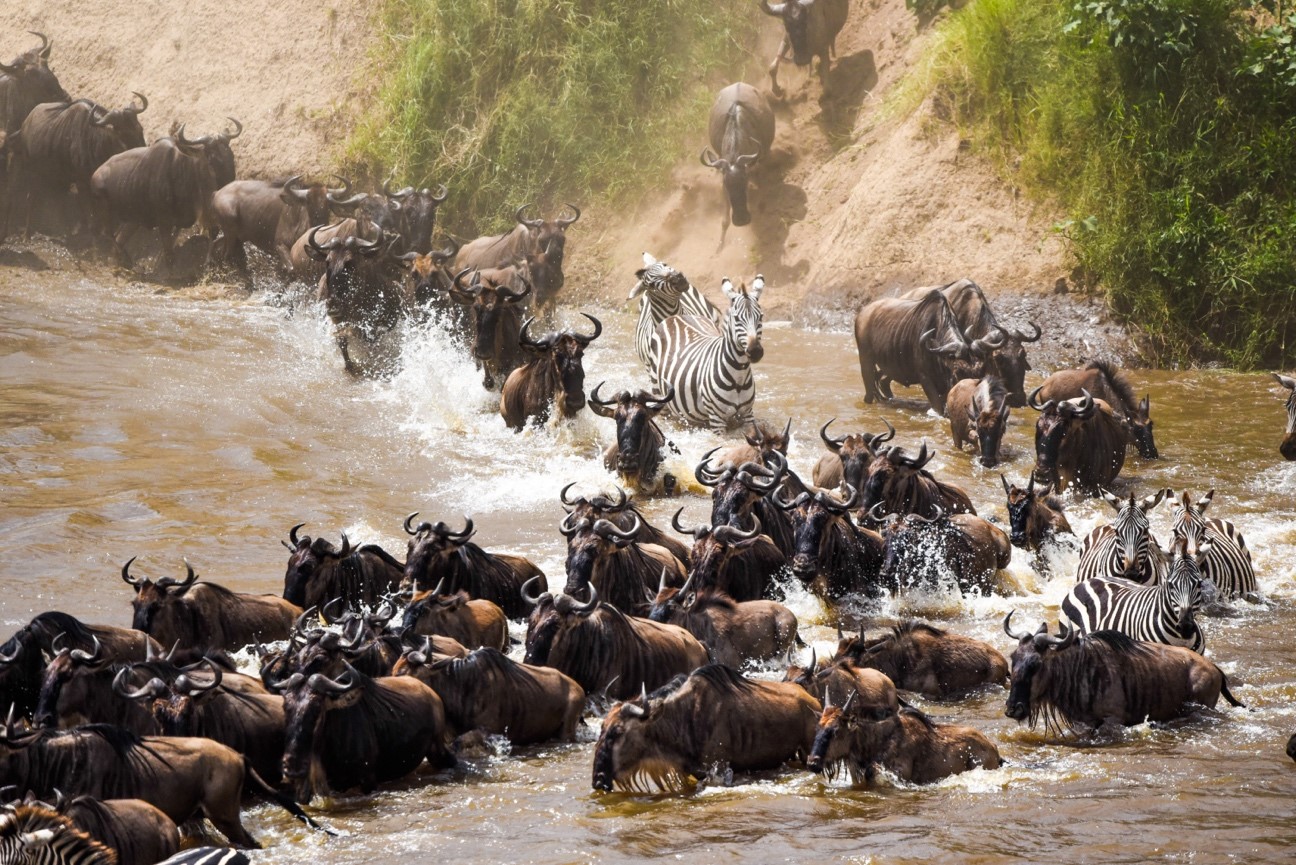The Mara Siria Story: The Great Migration
In July/August every year, arguably the greatest wildlife on the planet spectacle takes place in the Masai Mara: the famous Great Migration. It triggers the so-called ‘high season’ when thousands of tourists from all over the world flock to the Mara to catch a glimpse of the spectacle. So, enjoy the next edition of The Mara Siria Story: The Great Migration.

It is hard to forecast exactly when the animals will descend on the Mara following an epic journey clockwise through northern Tanzania and down through Kenya. Their arrival depends largely on the seasonal rains which, due to climate change, are becoming more and more unpredictable.
It’s estimated that almost 2 million zebra and wildebeest journey in the Great Migration each year. These two species enjoy each other’s company for safety and take part in ‘grazing succession’. This refers to how zebra like to eat slightly longer grass than the wildebeest who prefer feeding on stuff below 15cm. So, after the zebra feed and shorten the grass to below this height, the wildebeest can follow them and munch on the shorter grass. They are often seen together not just in the migration but all over southern Africa.

This year’s migration is just getting going. The wildebeest and zebra are yet to arrive in their millions but several thousand can already be seen sweeping across the savannah.

A highlight of the phenomenon is the ‘crossings’ where the wildebeest must cross the Mara River on their journey, putting themselves in danger of being snapped up by the hundreds of hungry crocodiles who patiently wait for the feast.

The crossings can be utterly chaotic. Sometimes you have to exercise extreme patience whilst waiting for several hours until the animals muster the courage to cross.

It only takes one though. As soon as one individual makes the initial dart across the flowing water, the rest follow in huge numbers. In peak migration the crossings can last several hours as tens of thousands cross at once. At the moment, each crossing features around a few hundred individuals but is just as mesmerising.


Some are unlucky. They fall victim to the dozens of crocodiles who lie in wait for the herbivores to cross. Although rare, on extreme occasions crocodiles can go entire years between migrations without eating. Being cold blooded, they can lower their heart rate to barely one beat per minute as they enter a hibernation-like state. This drastically lowers their energy expenditure and thus can go many months without food. It does mean however they must make hay whilst the sun is shining, i.e. eat wildebeest whilst the animals are crossing.

So as the migration intensify and Mara’s savannahs fill up, soon to be teeming with life, it is the perfect time to book to stay with us! Come and see this unique event for yourself and you won’t be disappointed…
NEWS & ANGEBOTE
E-MAIL NEWSLETTER










